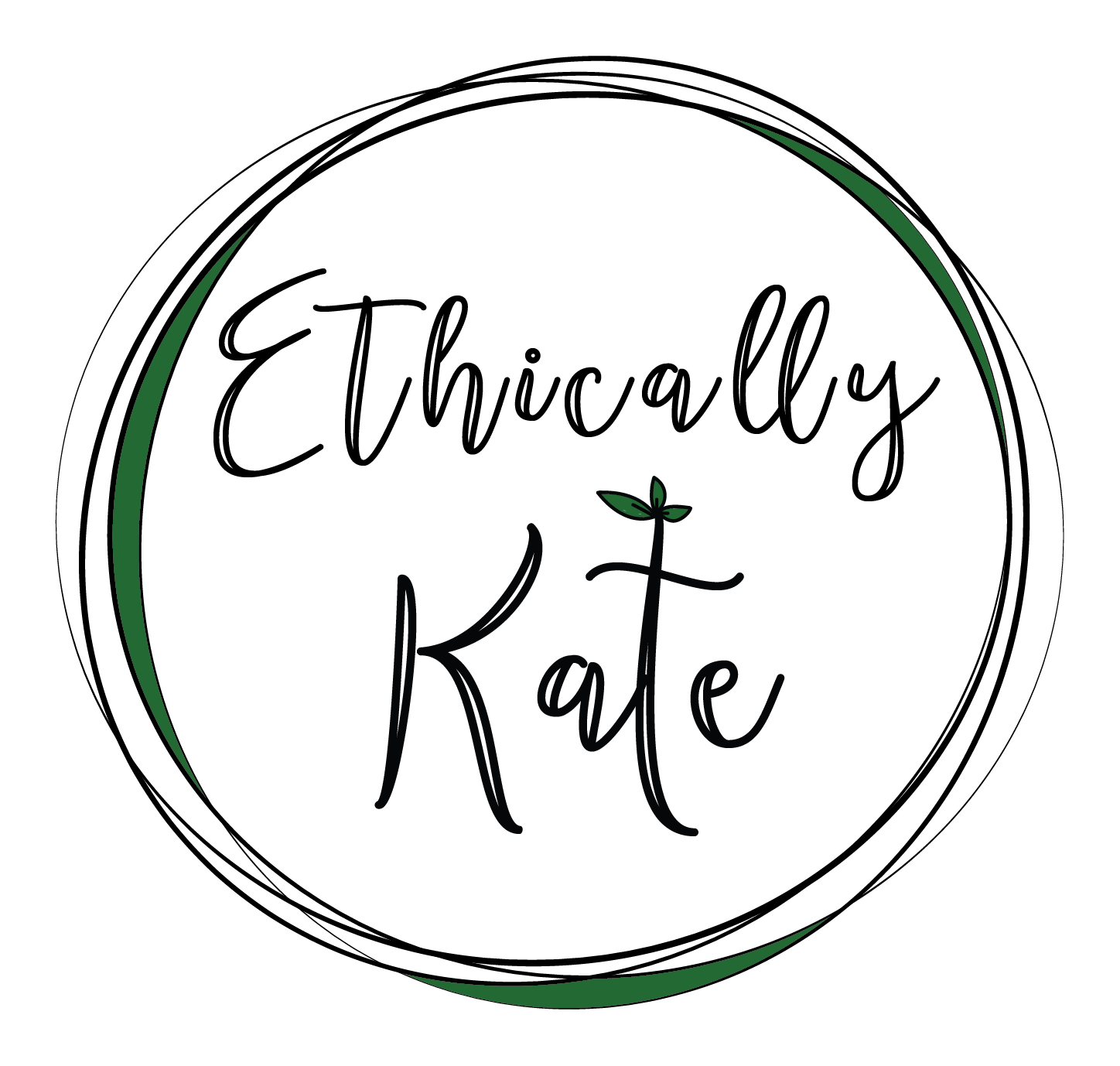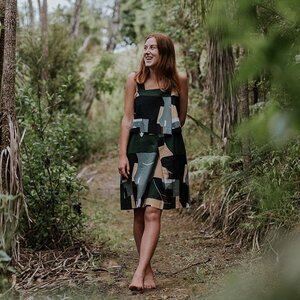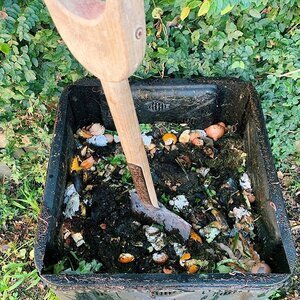How To Be An Instagram Influencer
When I first heard someone call me an Instagram Influencer, I wanted to vomit. Ugh. I am NOT that chick who gets paid to poke her booty out and pose with products she’s tried once and kinda likes, but is actually more attracted to the money the brand has offered her for the bootylicious photo. I do not take a thousand pictures of my restaurant meal before I eat it (occasionally I’ll take one!) and I go on holidays for pleasure, not for ‘the gram’.
I don’t mean to villainise all Instagram Influencers, but these types of people are the ones currently standing in the spotlight.
Me, an Instagram Influencer? NO THANKS.
Image by Nectar Photography.
Yet, because of how I work online, the term ‘Instagram Influencer’ often best describes what I do.
What I do: I work with socially and environmentally conscious brands to promote their services and products. I do this by showing how I personally use their products and services. I provide honest reviews, and support the brand as if I am part of their team. I give them feedback, suggest strategies, and back them 100%.
Amongst other platforms (like Facebook and my blog… oh and real life), Instagram is the main tool that I use to do this. I make money doing this (I also work as a writer, educator, sustainability consultant, sustainable event planner, and speaker).
At the time of updating this, I have 22.8K followers on Instagram.
With all the above considered, you can see how it’s probably natural to put me in the box of ‘Instagram Influencer’.
How I got here…
I came into this work out of pure accident. I had no intentions of ending up where I am. I simply started sharing about ethical fashion online (in late 2015) and couldn’t stop. I couldn’t sit quiet and keep the horrific facts about the fashion industry to myself. People and the planet were (and still are) hurting because of the way we consume clothes. It would have been selfish not to act on it.
I quickly realised that I couldn’t ask ‘who made my clothes’ without asking what they’re made from, ah and what about my rubbish and our plastic filled supermarkets? Where are my vegetables grown? Why the heck are we still using disposable coffee cups? … I dove (and I’m still diving) deep into the rabbit hole of how my entire existence impacts people and planet, while sharing about it online. Turns out, people wanted to listen. They were inspired to ask these questions and make lifestyle changes too. So, I kept on going. And here I am.
Image by Nectar Photography.
I nearly gave up
Recently I woke up and realised where I was and the platform I have created. People are calling me an Instagram Influencer, and to be honest with you, this made me want to stop.
Being associated with what I observe as a shallow, frivolous job and self-obsessive online presence, is my complete nightmare. I want absolutely nothing to do with it.
But with the positive messages of ‘wow I’ve reduced my rubbish bin by 2/3rds thanks to your tips!’ and ‘I have quit my fast fashion addiction, inspired by your messages!’, it felt wrong to throw the baby out with the bath water.
I’ve realised I am in a very privileged position. Instead of being beaten down and letting the actions of others stop my own authentic journey, I have decided to continue and focus on changing things up.
Enter: An Instagram Inspirer
If we all leave Instagram Influencing to those with great cameras and exposed butts, Instagram will turn into even more of a shallow pit of consumerism and fake ideologies.
I’d like to be part of a new era of Instagram Inspiring.
Out with the booty popping kind of Influencer (though I highly recommend popping your booty off camera to your favourite tunes, or wiggling it to inspire people to reduce their waste- hah) and in with the kind who gives a crap about changing the world in a positive way, and putting GOOD brands on the map.
Image by Nectar Photography.
I’ll be calling myself an Instagram Inspirer from now on. Let me explain exactly what this looks like…
How I work with brands
First, you’re probably wondering…
Why would they want to work with me?
I exist as an Instagram Inspirer who has strong public trust, and high engagement- meaning my followers are legit. They send me messages, selfies with their KeepCups, and comment honest and detailed answers on my posts when I ask them questions. It’s in a brand’s best interest for me to share about their products online, because they’ll be seen and respected by thousands.
To make things even better, my audience are a particular niche. They are primed and ready to make conscious decisions about the products they buy and the services they use. My followers are in my ‘sphere’ because they give a damn about the planet and people, even if it’s just a little bit of a damn. Although I may be biased, my Instagram community is the coolest group of people in the world. They’re the inspirers: they’re making the REAL change. So, if a brand works with me, they are welcomed into this community of absolutely cool people.
What happens first?
Aside from approximately 5 occasions over the past 5 years, I have never done any outreach: brands come to me. They come because they get me, they like my ‘vibrations’ and they admire the community I’ve built online and off. Sure, I still get the consistent emails starting off with ‘Dear Sir’ that assure me I’ll earn millions for promoting absolute junk, but mainly, my email inbox is filled with lovely humans who have socially and environmentally conscious brands. These people want to team up, they want a bit of ole ‘Ethically Kate’ and most often, I want a bit of them too!
Before you read on, understand that I am about to explain what USUALLY happens with brand collaborations. Every single company is different. This means how I work with each company varies depending on:
- Location (I may scrap the emails and meet in person if they’re close by)
- Stage & phase
- Communication style
- Budget
What USUALLY happens first…
Once an email from a company has landed, we start chatting. Unless it’s a special case and I have personally stalked them and used their products for years (this calls for a celebratory solo happy dance in my office and maybe a phone call to my mum), I do a brief online stalk of them to whittle out the ones I instantly don’t connect with. I consider if their design and aesthetics are something I would use in my own home and life, I consider their location (I have a specific focus on New Zealand/Australian companies), and stroll through their ‘about page’ to see how much information they are willing to give to their customers. Transparency is important to me.
If they make it through this first ‘screening’, I send them a list of questions, so I can understand if their company aligns with my values.
This list of questions is always adapted to the brand (e.g. the questions would be different if they made clothes or stationery), but they generally look like this…
Where are all your products/materials sourced from (details of each material type)?- e.g. countries, certifications, including swing tags, packaging etc.
Where do your products end up at the end of their life?- how can they be recycled and kept in the resource loop?
How are your products shipped to customers?- e.g. packaging and carbon neutral shipping.
What is the NZ shipping cost- where in the world do you ship?
Who makes your products? (as specific as possible please)
How do you ensure the people who make your products are paid a fair wage?
How do you foster diversity and equity in your business?- practical examples please.
When I receive their answers, I continue to do my own research. This may involve talking to my friend who is a global sustainability auditor and visits factories operating worldwide (love you Marina!), investigating if other bloggers I respect and trust have worked with them, and generally spending time investigating like the sustainable sleuth I am.
Image by Nectar Photography.
At any point during this entire process, I may feel ‘icky’ and decide that something doesn’t sit well with me. Maybe it’s their lack of transparency, the fact they use words that don’t properly describe their product (misusing the term ‘sustainable’ is a classic one), or perhaps it’s the way they respond to my questions defensively, rather than openly and warmly.
After practicing this type of process for around 5 years, I have become pretty good at whittling out the ‘good’ from the ‘bad’. Though remember, sometimes they aren’t ‘bad’, they just aren’t ‘me’. You’ll notice I use and wear the products and services of the brands I work with, so sometimes it’s simply a case of me not wanting to wear butterfly bags or saying no to promoting tie dye shirts- because I don’t like them one bit.
Media kit
This initial process can sometimes take months to complete: back and forth, back and forth. Questions, answers. When I’ve decided “let’s do it!” I send them my media kit. A media kit is like a bloggers menu. It’s a way for brands to choose what they want from me, depending on their budgets and how much of my time and energy they want to utilise.
I used to feel super weird about the concept of a media kit and receiving money for work that I LOVE to do. But I simply couldn’t keep on spending time trialling products and creating content for free. It wasn’t sustainable, I couldn’t keep growing, and I had the choice of either stopping altogether, or continuing in a way that gave energy (money is energy) back to me rather than sucking it. After all, a barber may love cutting hair, but paying him for a haircut doesn’t mean your haircut isn’t genuine or excellent.
I’m very clear that a brand never pays me to support them, they pay me BECAUSE I support them. No matter how much a company offers me, I will not work with them unless I support them (both their values and the quality of their product).
The brands who partner with me respect my time, energy, skills, and experience in content creating and communicating. I provide each company with images, words, and access to a platform of wonderful people who deserve to know about them. It’s a win for everyone.
If a brand has paid me for my energy, I use the word and/or hashtag #ad (this is regulation within the advertising guidelines) and #proudlypartnered (this hashtag was created by my blogger BFF @ethicalmadeeasy) on Facebook and Instagram. I also explain when a blog is sponsored at the bottom of each sponsored blog post.
Image by Nectar Photography.
Note: I still do work for free, but more on that later.
What a partnership with Ethically Kate looks like…
The most common way I work with companies, is in a media kit package I call the ‘Long Term Relationship’. We become a team for a whole year. I fully become part of who they are and what they do. I write a blog post, share frequently on Instagram, post about their sales and happenings, and give them brand/product feedback. Affiliating with a company is a big deal; it’s involves giving my seal of approval for all that they do. I position myself as an advocate for their company, publicly. Hence, my deep research before committing, and saying no to most offers out of caution.
While the brand reads over my media kit and decides, they send me their product or service to trial. Even if they have chosen a particular ‘package’, I can (and I do) say no at any point, particularly when trialling the product.
I then trial the product for one week to two months, depending on what it is (e.g. menstrual cups take longer to test out than yoga mats).
Research done, trial done, and if we are both happy with everything… we launch in. By the time this is up, we’re pretty tight. Most brands I work with become my best mates. We Skype, have coffee, and generally support each other in life and in business.
The Exceptions
Contract work
Sometimes a brand has a specific campaign they want my help with, so they send me a contract that details their expectations, my KPIs, and what they can offer me for my time and skills. Unless I already know them well, we go through a similar process with my questions and research, but instead of sending my media kit, we work on a different contract basis.
Gifting
At least once a day I am asked if I would like a gift in exchange for a post/shout out. If it is something I need and would like to try out, I say yes, but with clear Ts+Cs:
If you gift a product, that gift must be genuine. I am not obligated to share about it, and you bear the risk of me either saying I love it, or… well… publicly saying I don’t like it.
Receiving gifts with weird strings attached makes me feel used. I’ve had brands find my address from who-knows-where before, and send me products without reason or explanation…
Unless you’re a blogger, you probably won’t understand how abusive this feels. I don’t mean to sound ungrateful, but I have poured my heart and soul (and put in thousands of hours) into building an online community of incredible people. When a random company gives me something, it feels sort of like ‘oh hey, I gave you a present, so now you owe me something!’- even though this agreement is made without my consent.
If I share about a product that was gifted, I use the works and/or hashtag #ad and #gifted
Giving back
I leave a certain amount of time in my life to accept gifts in exchange for posts/blogs/content. I allocate this time to companies who I already know, love, and trust, so there’s no weirdness to the gifting.
In general, I make sure to share about brands and companies I hear about and simply love what they do (for free). I share about start-ups when I adore their mission, and make sure that every company I work with gets more than just what’s listed in my media kit. I go above and beyond to make sure they get their full value out of our partnership. Of course, I share about brands that I purchase and use in my everyday life too.
What do I do with SO MUCH STUFF?
Though no one has ever asked me this, I ask myself this question frequently. Now that I have done this type of work for several years, while also embracing minimalistic living, I have started to feel stuffocated (a term borrowed from James Wallman).
The way I promote products and services is through my own personal testimony and review. BUT what if I just simply don’t need a new summer dress, even though they’re beautiful and made by incredible local woman from organic cotton?
I’m starting to work out ways around this.
I…
- try the product, use it for a short period, and then gift it to friends/family or readers/followers
- run irregular giveaways of products on Instagram
- donate products to local charity groups
- enlist friends to trial products in exchange for their reviews
I’ve developed this method of Instagram Inspiring over the past 5ish years, and it’s still evolving. I’m learning as I go, I’m making mistakes and I’m learning from them. I ask for feedback from followers and brands, and take advice from other bloggers on board.
I love being an Instagram Inspirer. I can be in my PJs while writing inspiring messages that reduce hundreds of tonnes of waste, or make someone smile.
Social media is a powerful tool, and I will strive to use it correctly for the benefit of people and the planet.
Image by Nectar Photography.

















